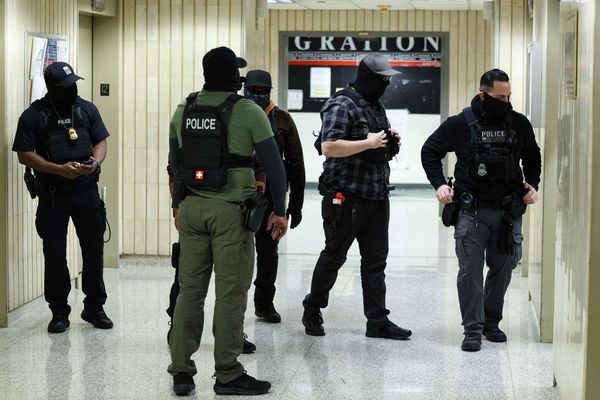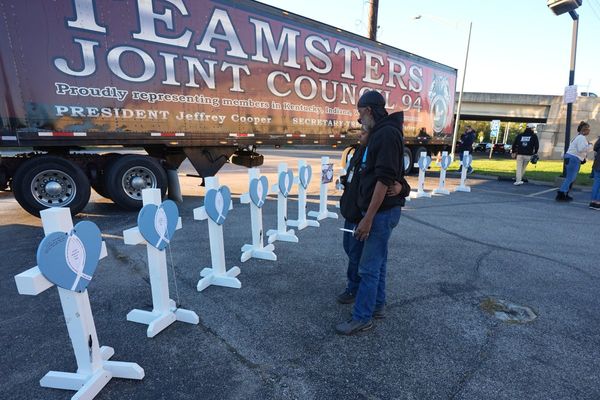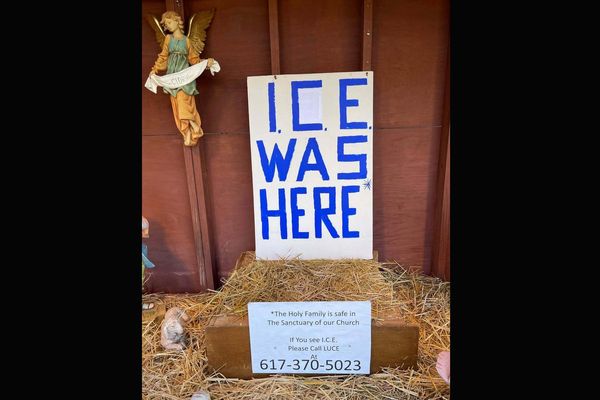
Australia’s online safety chief has warned the Albanese government of the imminent “ground war” by tech giants harnessing “the most famous influencers” before a social media ban for under-16s later this year.
Anthony Albanese announced in July the government’s decision to include YouTube in the restrictions set to begin from December, reversing an earlier decision to exempt the video platform.
The decision followed advice from the eSafety commissioner, Julie Inman Grant, that its exclusion was inconsistent with the law’s intention given it had similar functionality to other social media sites, such as TikTok and Instagram.
In emails to the communication minister’s office, Inman Grant said she anticipated the laws would invoke a “lobbying surge” brought on by concerns the ban would affect advertising revenue, a trove of newly released documents tabled in the Senate on Wednesday show.
Sign up: AU Breaking News email
“Finally, we are anticipating a potential lobbying surge by the currently excluded platform and I expect the ground war will be at the education level – and will also involve the harnessing of the most famous influencers,” Inman Grant wrote to a senior adviser in Anika Wells’ office in June after a meeting.
“We all know that this is about monetisation of the millions of under 16’s on these platforms who HAVE accounts today – but may then not at commencement. This will have an impact on attracting certain advertisers that may be targeting the 8-15 demographic.”
After a meeting with YouTube officials in July, Inman Grant reiterated her advice to the minister to exclude the video platform, noting its key arguments were “moot”.
“If YouTube is adamant that they are not an age-restricted social media service then any concerns held by Google about the impact of them not being specifically exempted in the rules seem to me to be moot,” she said in an email five days before the government’s announcement.
“If the service isn’t caught by Part 4A (as Google asserts) then it logically can’t be exempted.” Part 4A of the act defines what an age-restricted social media platform is.
The documents, which detail the discussions around determining which social media sites the restrictions would be applied to, also show the department’s concern about information from meeting with TikTok officials leaking to the media.
In a June briefing note ahead of a meeting between Wells’ chief of staff and TikTok officials, the department flagged they would “likely raise the exclusion of YouTube” from the rules.
It also warned some information from meetings with the previous communications minister, Michelle Rowland, had been shared with the media.
“In the past, TikTok has sought to exploit perceived misalignments in position between the department and Minister Rowland’s office. Statements made in meetings with TikTok have appeared in the media shortly after the meetings,” the briefing note said.
TikTok declined to comment.
Three days after the meeting with TikTok officials, Wells sought advice from Inman Grant about minor changes to the draft rules, which included YouTube remaining exempt.
Inman Grant’s advice was delivered the following week offering five options, with the first being to remove YouTube’s exclusion. The department agreed with this advice.
Wells met with the Wiggles chief executive, Kate Chiodo, on 30 June to discuss their support for YouTube’s exclusion from the ban.
The department’s briefing note confirms thinking in the federal government that YouTube Kids – a video-streaming version of the platform that is accessed by parents or guardians and doesn’t allow comments – will likely be excluded from the ban. It said the Wiggles and other early learning content creators were “highly unlikely to be impacted” by the restrictions because they could still be viewed through YouTube Kids.
However, the department did concede the earnings of content creators could be affected.
“While access for Australian children is unlikely to be affected, revenue to creators like the Wiggles could be affected. In particular, while YouTube offers a number of ways for creators to monetise their content, many of these focus on creators’ subscriber numbers,” the briefing note said.
Inman Grant’s advice to Wells included another option to consider re-drafting the rules to ensure platforms can be exempted for both their purpose, as well as the harm they risk.
The department agreed with the advice but recommended to Wells they be considered as part of a two-year review of the laws after coming into effect, noting the complexity of the change.
After a meeting between Inman Grant and an adviser from Wells’ office, the eSafety commissioner said the change was “critical” given some platforms could “dial back their policies or eviscerate their trust and safety teams”.
“From my perspective, this is critical from an enforceability perspective and, as I said yesterday, the risk profiles and threat vectors change regulatory on platforms – particularly when they dial back their policies or eviscerate their trust and safety teams,” Inman Grant wrote in June.
“Another trend we have called the platforms on is allowing the veritable ‘colonisation’ of organised criminals on their platforms to target under-aged users with sexual extortion and other social engineering scams because they are failing (quite deliberately) to prevent ‘recidivism’ on their platforms by not tackling the mass proliferation of fake and imposter accounts.”
Wells arranged a meeting with YouTube’s global CEO, Neal Mohan, on 3 July to discuss “YouTube’s desire to be excluded from the social media minimum age obligation”, according to the documents. It said Wells was “seeking information on why YouTube believes it is different from other social media platforms and warrants an exclusion”.
The documents also reveal the Snapchat CEO, Evan Spiegel, met with Wells on 30 July to discuss the ban, in a meeting that was facilitated by Australia’s ambassador to the US, Kevin Rudd.
Guardian Australia has gone to Snapchat and YouTube for a response.







